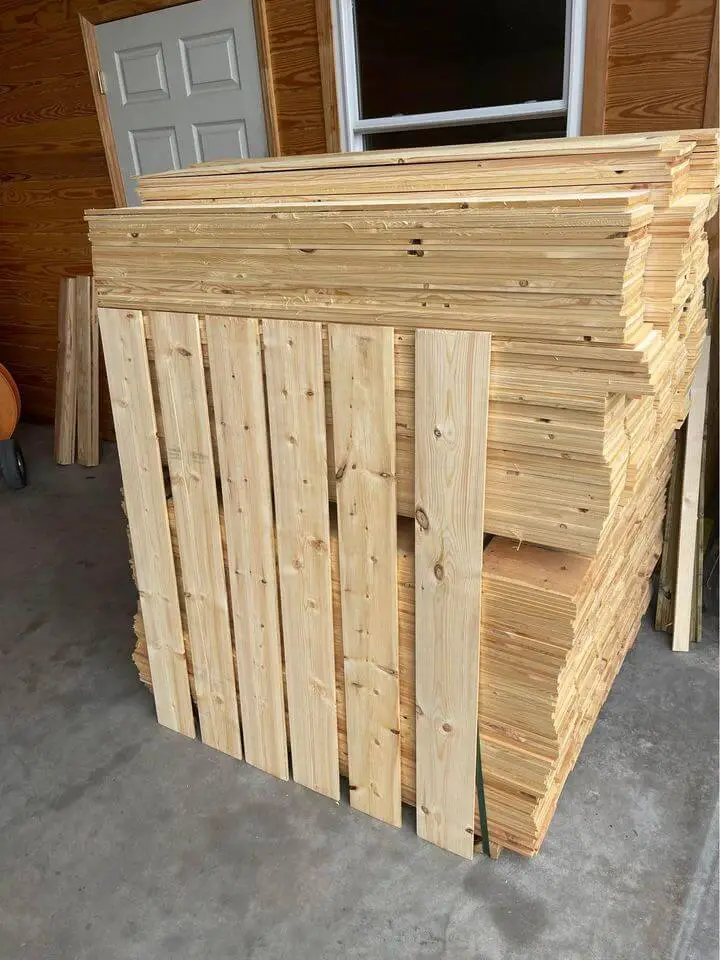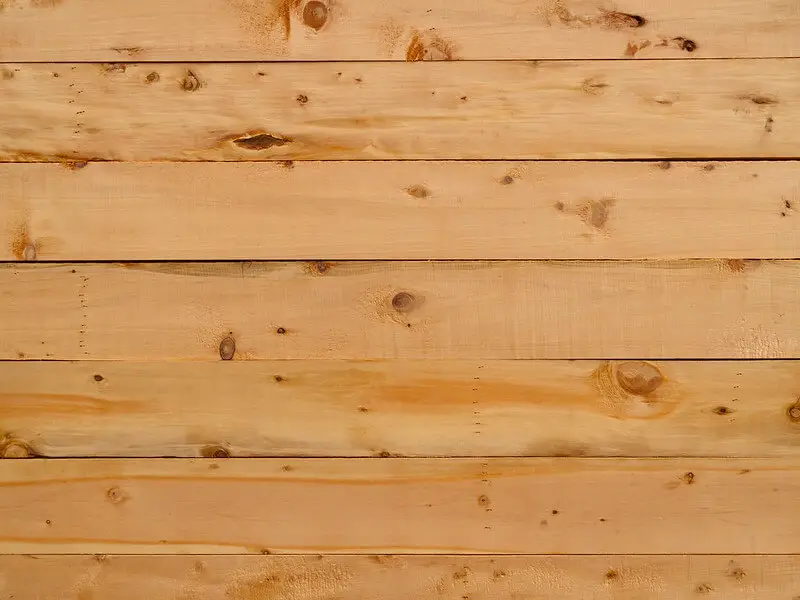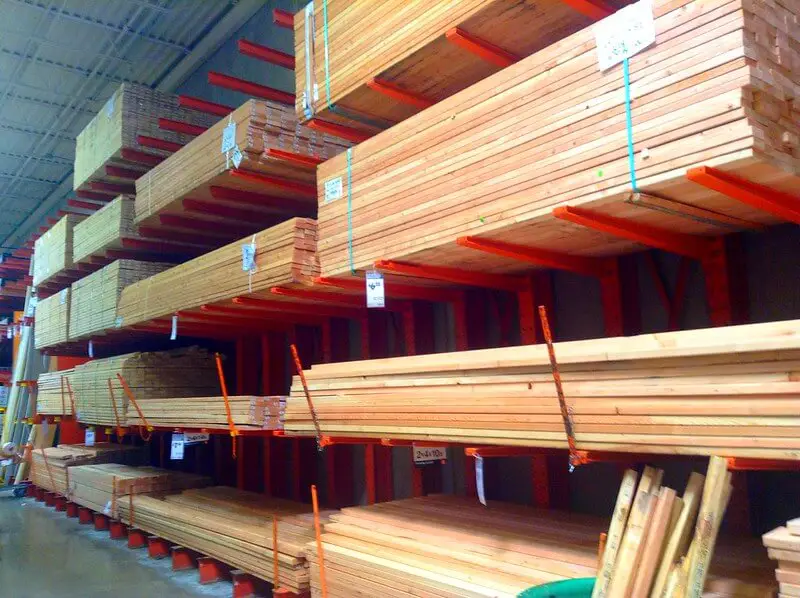Pine is a softwood that belongs to the conifer family. Examples of pine species include the Southern Pine, the Eastern Pine, and the Red Pine. These species have sharp needle-like leaves.
Like pine, spruce is also a member of the conifer family. Examples of spruce species include Engelmann spruce, Norway spruce, Sitka spruce, and white spruce. They, too, have needle-like leaves.
Spruce vs pine differ in physical appearance. The needles on pine are attached to a branch in a cluster. In spruce, needles are attached to the branch individually. The needles on pine trees are also longer than those on spruce trees.
The properties of spruce and pine differ, as you will see below.
Related Article: Douglas Fir vs Southern Yellow Pine
Spruce vs. Pine Comparisons

Hardness
The hardness of any wood is determined by its ranking on the Janka scale. The higher the rating, the harder the wood.
Some spruce species have a higher Janka rating compared to pine species. For instance, the Black Spruce ranks at 520 lbf (2,313N), while the White Pine ranks at 420 lbf (1, 868N). This means that spruce species are harder than pine species.
Strength
Strength can be defined as the ability to resist stress. When determining the strength of wood, there are two essential things one should take note of;
- The load or stress that wood can resist
- The amount of deformation or strain the wood sustains at a given stress level.
Some species of pine have a higher maximum crushing strength than those of spruce. For instance, at 12% Moisture Content, the maximum crushing strength of Pine Longleaf is 8,220 psi, while that of Spruce Sitka is 5610 psi.

Other species of pine have a much lower maximum crushing strength than spruce. While the maximum crushing strength of Spruce Sitka is 5610 psi, that of Eastern White Pine is 4800 psi.
Spruce is said to have a high strength-to-weight ratio and is considered stronger than pine. However, from the above examples, we can conclude that the strength of pine and spruce depends on which species is in question.
Durability
There are a few reasons that make pine more durable than spruce. Spruce is naturally less resinous compared to pine. It’s, therefore, more susceptible to insect attacks. It also has a low decay resistance. Pine, however, has moderate resistance to decay and insect attack.
Pine has a lower shrinkage percentage than spruce. For example, the shrinkage percentage of Pine longleaf is 7.5 while that of Red Spruce is 7.8.
Spruce is not resistant to outdoor weather. On the other hand, pressure-treated pine can withstand outdoor elements without a problem.
Workability
Pine has fairly good workability. It works well with both hand and machine tools. It also nails, screws, and glues nicely. However, the resin content in this wood affects its workability as it tends to clog cutters.
Spruce works well with hand and powered tools. It also holds nails and screws nicely. This wood contains fewer knots than pine; thus, its workability is considered better than pine. Some spruce species, such as the Sitka Spruce, have poor workability. This species contains knots that dull saw blades very quickly.
Pine has one advantage over spruce; it is flexible. Spruce tends to break easily under stress.
Finishing
Pine is moderately difficult to finish. It’s difficult to achieve good results when staining pine since it has different-sized pores that are unevenly distributed. Much of the stain lodges in the larger pores, making them appear darker than the smaller pores.
Pine is also not fully penetrable. Painting it leaves its surface looking blotchy.
Spruce is much more difficult to finish. Its large, open grains quickly absorb stain leaving behind a blotchy surface. It can take paint well only if the surface is smooth and even. You can sand the wood with a medium grid to achieve a smooth wood texture.
Cost
Pine is more affordable than spruce. A board foot of pine can retail at around $2.33, while that of spruce can cost up to $10.
The price of spruce depends on the quality of the wood. Spruce wood is classified into two; high-grade and low-grade. The high grade is the quarter-sawn spruce that’s free from knots. It’s generally more expensive than the low grade.
Low-grade spruce has defects such as knots and cracks. It’s mainly used for construction purposes.
Other related readings
Key Takeaways Spruce vs Pine
- Some spruce species, e.g., black spruce, is harder than most pine species.
- The strength of spruce or pine depends on the species in question. The pine longleaf has a higher maximum crushing strength compared to spruce Sitka. But the Sitka spruce has a higher maximum crushing strength than the eastern white pine.
- Spruce is less resistant to decay, insect infestation, and outdoor weather. Thus, it’s less durable than pressure-treated pine. Spruce also has a higher shrinkage percentage than pine.
- Both spruce and pine have good workability. They hold nails and screws nicely. It’s essential to use knot-free wood as knots reduce the workability of the two kinds of wood.
- Pine is moderately difficult to finish, while spruce is challenging to finish.
- Pine is generally more affordable than pine.

